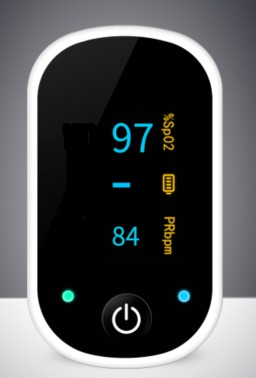As more people seek to manage their health from the comfort of their homes, home medical equipment (HME) plays a crucial role in ensuring safety, mobility, and effective treatment. Whether it's to assist with recovery after surgery, aid the elderly, or support those living with chronic illnesses, selecting the right equipment can make a significant difference in quality of life. In this comprehensive guide, we’ll explore the types of medical equipment available, how to choose the best tools, common concerns, and how to navigate insurance and costs.
1. Introduction
Today, managing health at home has become increasingly common, especially for individuals with chronic conditions or limited mobility. With innovations in home medical equipment and supplies, more people can stay at home, reduce hospital visits, and maintain a higher level of independence. This guide will help you navigate the choices available and ensure you have the information needed to make informed decisions.
2. Types of Home Medical Equipment
Choosing the right HME depends on individual needs, and understanding the options can be overwhelming. Here's a breakdown of the most common types of equipment:
| Equipment Type | Purpose | Examples |
|---|---|---|
| Mobility Aids | Support individuals with movement difficulties. | Wheelchairs, walkers, rollators, canes. |
| Respiratory Devices | Assist with breathing and oxygen management. | Oxygen concentrators, CPAP machines. |
| Monitoring Devices | Track vital signs at home. | Blood pressure monitors, pulse oximeters, glucometers. |
| Homecare Beds | Provide comfort and easy access for those bedridden. | Adjustable hospital beds, pressure-relief mattresses. |
| Patient Lifts | Help with safe transfers between bed, chair, or toilet. | Hoyer lifts, sit-to-stand lifts. |
Case Study: How a Pulse Oximeter Saves Lives
During the COVID-19 pandemic, pulse oximeters became household necessities. For patients with respiratory issues, this simple device can detect low oxygen levels early, prompting timely medical intervention. Studies show that early oxygen level monitoring significantly reduces hospitalization rates for high-risk patients(PROMED DME).
3. How to Choose the Right Equipment
Choosing equipment isn't just about function; durability, safety, and insurance coverage are key factors.
Factors to Consider:
- Quality and Safety Standards: Always purchase from FDA-approved manufacturers. High-quality equipment is essential to avoid malfunctions that could endanger health.
- Durability: Equipment like hospital beds and wheelchairs should last at least 3 years with frequent use. Look for warranties and read reviews.
- Medical Necessity: Ensure the equipment matches the patient’s health needs, and always consult a healthcare provider.
Durability Comparison:
Item |
Durability
|
Expected Lifespan |
Hospital Bed
|
High
|
10+ years
|
Wheelchair
|
Medium
|
3-5 years
|
Blood Pressure Monitor
|
Medium
|
2-3 years
|
CPAP Machine
|
High
|
5+ years
|
Insurance Tip:
If you're under Medicare, many HME items (e.g., wheelchairs, oxygen equipment) are covered under Part B, as long as your healthcare provider deems them medically necessary(PROMED DME).
4. Commonly Asked Questions
Here are some frequently asked questions about home medical equipment, based on queries from platforms like Quora and AgingCare:
- How do I get home medical equipment through Medicare?
Eligibility: Medicare Part B covers equipment that is durable, used for medical reasons, and prescribed by a doctor. Some examples include wheelchairs, hospital beds, and CPAP machines. Patients are usually responsible for 20% of the approved cost(AGINGCARE).
- What medical equipment should every home have?
Essentials: A well-stocked home should have items like a first-aid kit, a blood pressure monitor, and a pulse oximeter. For seniors, items such as mobility aids and bathroom safety equipment (grab bars, shower chairs) are critical(MED MART).
- Can I rent home medical equipment?
Yes: Renting equipment can be a cost-effective solution for short-term needs. Many suppliers offer rental services for hospital beds, oxygen concentrators, and wheelchairs. However, ensure the rental company accepts your insurance(PROMED DME).When purchasing or renting equipment, choose reputable suppliers.
- How do I maintain and clean home medical equipment?
Best Practices: Regular cleaning and maintenance are essential to extend the lifespan of equipment. For example, wheelchair tires should be checked weekly, and CPAP machines need monthly filter changes. Cleaning instructions often come with the product, or you can consult a healthcare professional for guidance.

5. Conclusion
Choosing the right home medical equipment involves understanding your or your loved one’s needs, ensuring quality and durability, and navigating insurance coverage. Investing in the right tools not only provides peace of mind but also enhances the overall care and comfort for the patient.
To ensure the best care, always consult a healthcare professional before making decisions about home medical supplies. With the right guidance, you can create a safer, more supportive environment for long-term health management at home.
Actionable Checklist:
- Verify equipment quality with FDA standards.
- Ensure insurance covers your chosen items.
- Set up a regular maintenance routine for equipment.
→Click here to learn more about our medical equipment
or
